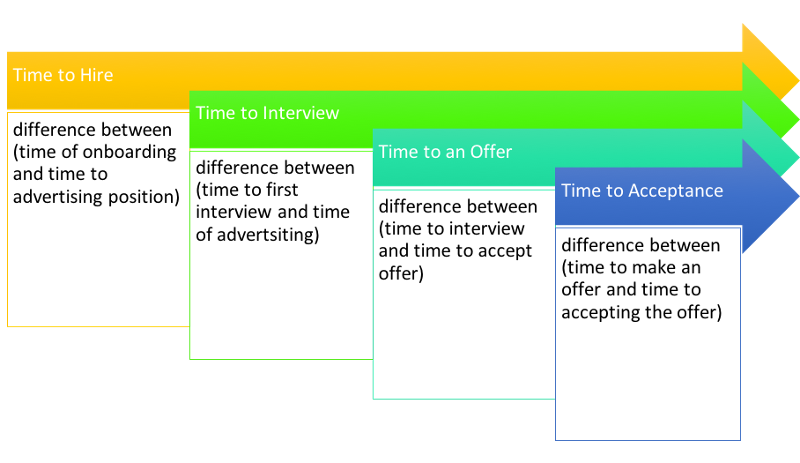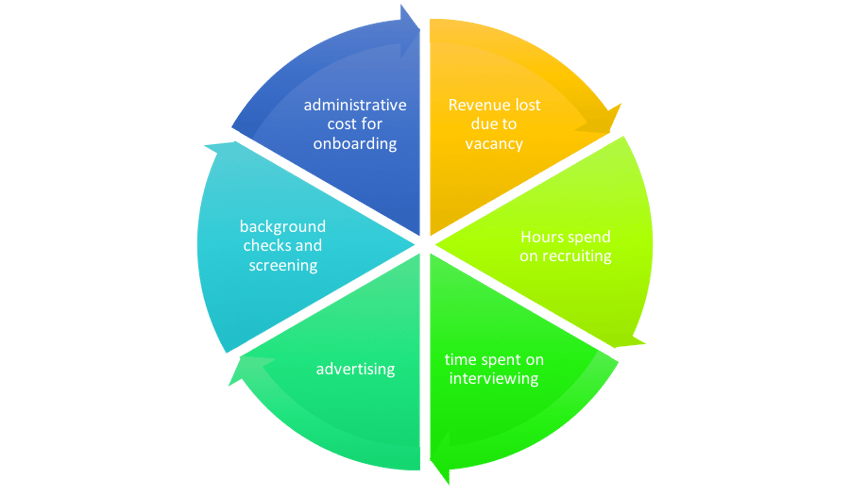 The goal of any good recruiting program is to locate and hire the best talent out there. The process can be long and time consuming, and it’s important to assess whether or not your tactics are paying off in the long run. Here is a list of metrics that can help you evaluate the success of your recruiting program, or to show you where the faults and weaknesses are so that you can correct them. Understanding how to make these numbers work for you is critical to ensuring a solid recruitment plan for your company.
The goal of any good recruiting program is to locate and hire the best talent out there. The process can be long and time consuming, and it’s important to assess whether or not your tactics are paying off in the long run. Here is a list of metrics that can help you evaluate the success of your recruiting program, or to show you where the faults and weaknesses are so that you can correct them. Understanding how to make these numbers work for you is critical to ensuring a solid recruitment plan for your company.
Time to Hire
This is one of the numbers that can be broken down further than just the basic time involved. While the basic number is the time between advertising the position and onboarding your selected candidate, there are plenty of steps in the process that can be tracked as well. You can track the time from advertising to the time of the first interview, then to an offer, acceptance, and then the onboarding. Each of these steps is part of the larger process, but once you have a breakdown of how long each step should take, it will help you figure out how well future hiring processes are going. Remember that any time that a position is open and you are spending hours working on finding a suitable candidate is money being lost.

Cost to Hire
This one is also not as simple as it sounds. The actual cost of filling a vacancy needs to consider things like revenue lost due to the vacancy, hours spent on the recruiting process, time that the managers spend interviewing candidates, advertising, completing necessary background checks and other screening, as well as the normal administrative costs involved in onboarding a new employee. In the end, you’re talking about the amount of money that you must spend on an employee before they even begin to produce work for you and earn a paycheck. The lower you can get these numbers, the better your investment will be.

Source of hire
This is one of those things that can vary widely in different fields and even for different positions within a particular field. Whether you’re sourcing your potential employees through LinkedIn, Job Boards, referrals from other employees, or through professional networks, it’s important to understand where the most likely place to find a particular type of candidate is. That isn’t to say you should rule out any candidates that apply from other places, it’s just a tool for helping you focus your advertising resources effectively.
Suggested reading: Analytics for measuring RPO success
Retention rate
As you can probably guess, when the cost of a new recruit is high, it’s quite a disappointment when one doesn’t work out. Not only have you spent a deal of time and money with nothing to show for it, now you must begin the process from square one. Finding out why employees left, or had to be terminated, can help you hone your recruitment program to avoid similar problems in the future. They can even help you find problems within your organizational structure such as a poor manager or inappropriate pay scale for the job being done. It’s not only important to find out the rate at which employees are leaving, but the reasons behind the departure. Losing employees regularly leaks money like a sieve from your company.
Suggested reading: How to measure your recruitment performance
Acceptance Rate
One of the things that you may want to look at is how readily candidates are accepting your offers. If you find that multiple candidates are refusing your offer, there may be something in your salary or benefits package that you’re missing. In many cases, it may even be worth it to raise the salary range if you wind up investing time and effort into hiring candidates that don’t accept. Remember the cost to hire mentioned above? If you have multiple candidates turn down the offer, in the end you might be spending more making sub-par offers to talented individuals than you would by offering them a competitive salary. This ties into the cost to hire metric very closely, and should be a large consideration when setting salary ranges and benefits packages.
Other Important Metrics
Don’t forget to consult your company mission when determining what metrics to track. If you’re committed to diversity, make sure that you are tracking things like gender, race, ethnic background, education level, and other demographics. If you find that most of your interviews wind up being with 30-something white males, you may want to see what you can to do locate more diverse talent, before you end up embarrassing yourself to your core interests. This can be applied to any other quality or strength that you wish to see within your organization as well.
After you’ve gotten a handle on tracking this data, it’s important to use it to your advantage when building your recruitment program. These metrics can help you pinpoint the failings in your program so that you can correct any deficiencies, and still remain a competitive employer able to seek out and hire the most successful talent in your industry.
Related article: 6 Step process for measuring recruiting performance
About the author: Simone Smith is a blogger and content specialist who works at Online Courses Australia and often shares her stories about successful business growth. In her free time, she enjoys listening to business podcasts or spending time away from home.















